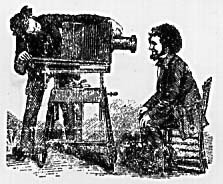1) Art Spiegelman’s Maus I and II is about a Jewish Auschwitz survivor named Vladek, recounting the horror of WWII for his son Art Spielgelman, who uses his father’s history and experiences by creating a powerful adaptation of his story through the medium of comics (graphic novels). Vladek’s story for his son spans his life before the war (though just before the German invasion of Poland), and continues throughout the war – he tells of how he was drafted into the Polish Reserves, becomes a Nazi POW, then escapes and spends much time running and hiding, ends up in Auschwitz, and is eventually freed and reunited with his love Anja.
2) The main issues in Maus I and II concern the experiences of the Nazi concentration camps for Jews and other POWs in WWII, the after effects of war – not only for the survivors but future generations – as well as father/son relations, Jewish cultural issues, religious issues, and history.
3) Maus I and II use a very gritty, simplistic, yet highly expressive art style. Characters backgrounds are drawn with heavy contour lines. Lighting and shading is applied through cross-hatching techniques and heavy outlining. There are many scenes with stark contrasts between white and black, with some characters presented as black silhouettes. On a final note, characters in Maus I and II are not presented as humans, but rather animals. Art Spiegelman decided to assign certain animals to certain people, for instance; Jews are drawn as mice, Germans are cats, and Americans are shown as dogs.
On a final note, there is a hierarchy among the characterizations of the various groups of animals, i.e., cats are more powerful than mice, and dogs are more powerful than cats. This is symbolic of the animal kingdom, but relates to the positions of power certain groups of people held during WWII.
announcements
This blog was created by and for students in an Introduction to Cultural Studies class at the University of Washington. Through an investigation of urban experience and representation--in theory, in graphic novels and in our own "readings" of Seattle's University District--we considered the formation and history of cultural studies as an (anti)discipline, with a special emphasis on the questions, "What does cultural studies do, and how do you do cultural studies?"
If you'd like to know more about the class, the blog or our U-District artifact project, please contact Gabrielle Dean: gnodean@u.washington.edu.
If you'd like to know more about the class, the blog or our U-District artifact project, please contact Gabrielle Dean: gnodean@u.washington.edu.
Subscribe to:
Post Comments (Atom)
blog archive
-
▼
2008
(92)
-
▼
May
(26)
- Seattle U District: City Artifacts Map
- City Artifacts: What and Where?
- Researching History and its Representations...
- Palestine
- Persepolis 1 & 2
- Shutterbug Follies
- A Scanner Darkly
- Maus I & II
- A Scanner Darkly
- Maus I & II
- Shutterbug Follies
- Persepolis 1 and 2
- Postcards: True Stories that Never Happened
- Maus I & II
- Postcards: True Stories that Never Happened
- Persepolis 1 & 2
- Mail Order Bride
- Mail Order Bride: Mark Kalesniko
- Persepolis 1 & 2
- Shutterbug Follies
- Maus I and II
- Palestine
- Postcards: True Stories That Never Happened
- PALESTINE
- Postcards: True Stores That Never Happened
- Shutterbug Follies
-
▼
May
(26)

2 comments:
I think it is important for us to mention how the characters are displayed according to heirarchy in the animal kingdom. This says alot about what was going on during the time and who was in power, which is what I think Spiegelman is trying to show.
Agreed. The hierarchy is symbolic of the power relations at play in this period of history.
Post a Comment